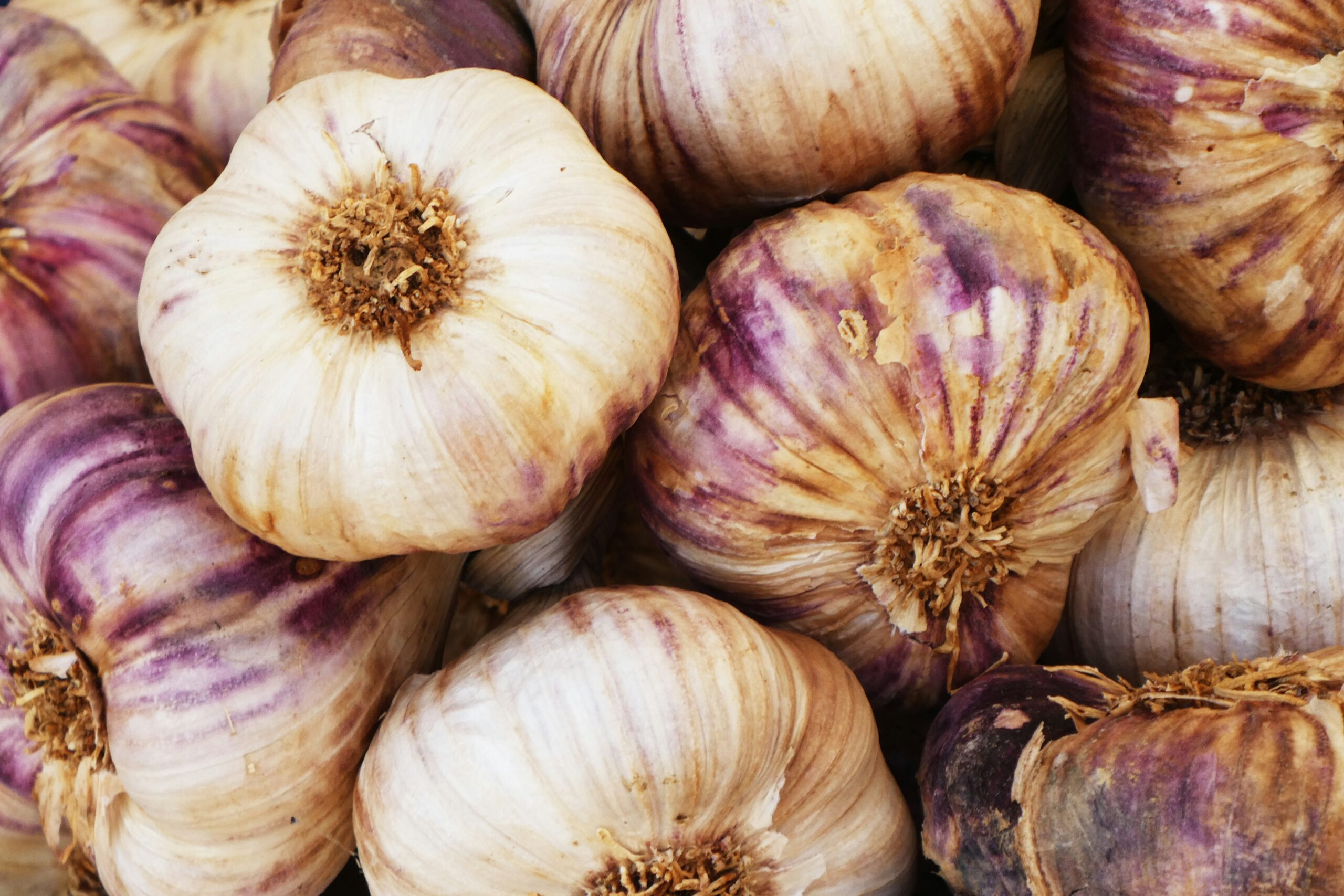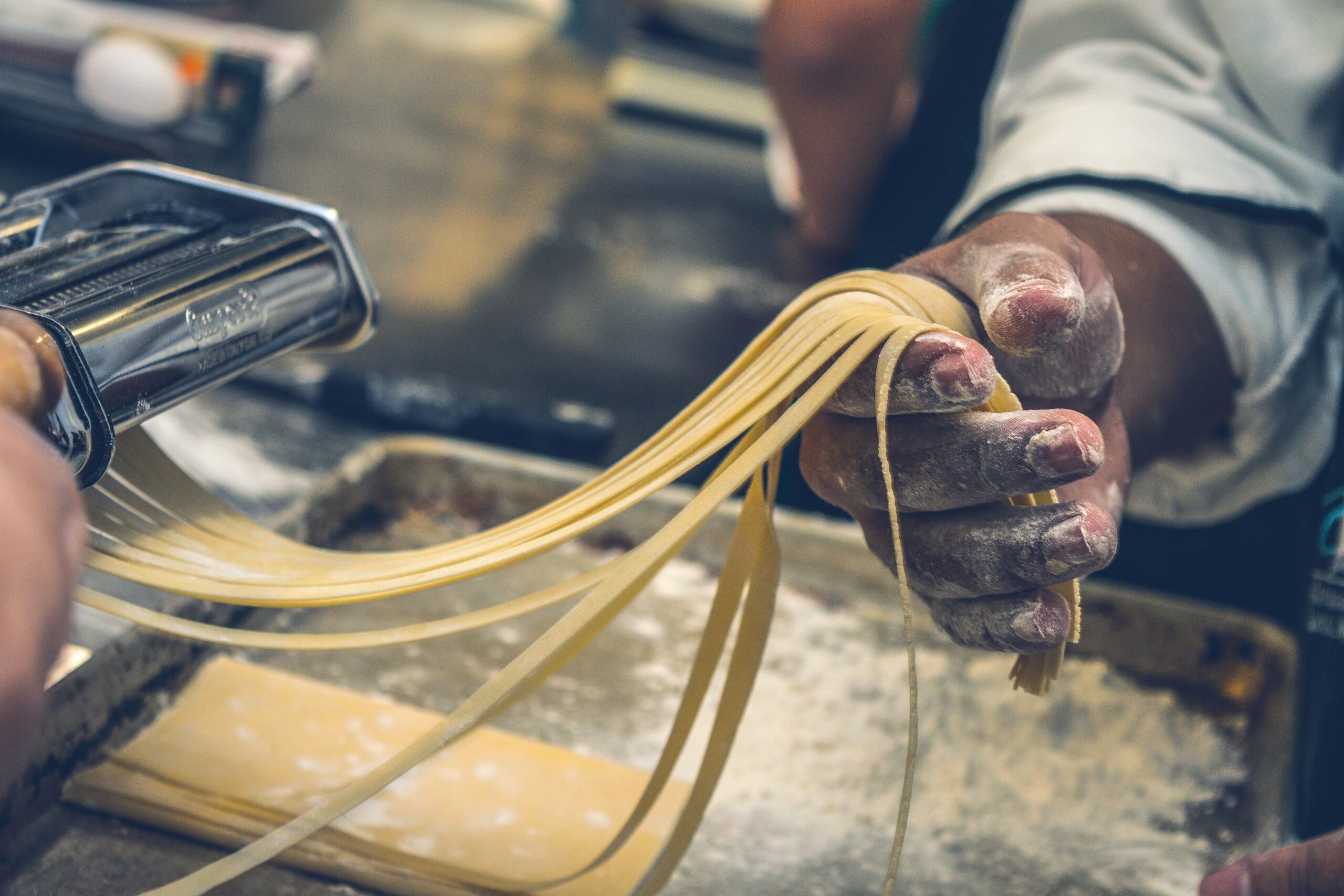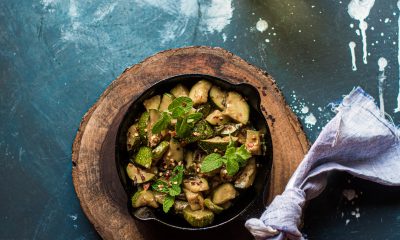Ingredients
The Hidden Power of Herbs and Spices: Revolutionizing Food Ingredients for a Healthier Future
Published
11 months agoon
By
Staff
In the evolving landscape of the food industry, the spotlight is increasingly falling on the humble herbs and spices. These natural flavor enhancers are proving to be formidable allies in the quest to improve food quality by replacing less desirable ingredients. The latest research and trends highlight how these natural ingredients are stepping up to the plate, not only to enrich flavor but also to offer health benefits, reduce artificial additives, and support sustainable practices.
The Historical Context
Historically, herbs and spices have played a crucial role in culinary traditions across the globe. From the vibrant turmeric used in Indian cuisine to the aromatic basil in Mediterranean dishes, these ingredients have been cherished for their flavor and medicinal properties. However, their role has expanded significantly in recent years, particularly in response to changing consumer preferences and advancements in food technology.
The Shift from Artificial to Natural
The low-fat craze of the 1990s led many food companies to remove saturated fats from their products, often replacing them with sugar and other artificial additives to maintain taste and texture. This shift, however, had unintended health consequences, contributing to the rise in obesity and related diseases. Today, there is a growing demand for natural, healthier alternatives, and herbs and spices are at the forefront of this movement.
Recent studies have demonstrated that herbs and spices can effectively replace artificial additives without compromising on flavor or shelf life. For example, rosemary extract is being used as a natural preservative due to its antioxidant properties, while spices like cinnamon and clove are known for their antimicrobial benefits. This not only enhances the nutritional profile of food products but also aligns with consumer demand for clean labels and transparency in food sourcing.
Enhancing Flavor and Nutrition
One of the significant advantages of using herbs and spices is their ability to enhance the flavor profile of food naturally. Culinary experts and food scientists are exploring how these ingredients can replace high levels of salt, sugar, and unhealthy fats. According to the American Heart Association, reducing sodium intake is crucial for heart health, and herbs and spices offer a flavorful alternative.
For instance, a study published in the Journal of Food Science highlighted that using a blend of herbs and spices can significantly reduce the need for salt without sacrificing taste. This approach is particularly beneficial in processed foods, where high sodium content has been a longstanding issue. Furthermore, spices such as cayenne pepper and ginger are known for their metabolism-boosting properties, adding another layer of health benefits.
The Science Behind the Flavor
The effectiveness of herbs and spices in improving food quality is rooted in their complex chemical compositions. These ingredients are rich in essential oils, antioxidants, and other bioactive compounds that interact synergistically to enhance flavor and provide health benefits. For example, the antioxidant properties of turmeric’s active compound, curcumin, have been extensively researched for their potential anti-inflammatory and anticancer effects.
Moreover, the use of advanced extraction techniques, such as supercritical fluid extraction, has enabled the industry to isolate and concentrate these beneficial compounds more effectively. This not only improves the potency and consistency of herbal extracts but also opens up new possibilities for their application in food products.
Industry Innovations and Applications
The food industry is witnessing a surge in innovations that leverage the power of herbs and spices. Companies are developing new products that cater to health-conscious consumers by incorporating these natural ingredients in various forms, such as powders, extracts, and essential oils. For example, the incorporation of herb and spice blends in snack foods, beverages, and even dairy products is becoming increasingly common.
A notable example is the use of oregano oil in meat products to extend shelf life and enhance safety. According to a report by the National Center for Biotechnology Information, oregano oil’s antimicrobial properties make it an effective natural preservative, reducing the reliance on synthetic additives. Similarly, the beverage industry is exploring the use of spices like ginger and cardamom to create health-boosting drinks that appeal to modern consumers.
Addressing Sustainability and Ethical Sourcing
In addition to health benefits, the use of herbs and spices aligns with broader sustainability and ethical sourcing goals. Many of these ingredients are grown in regions that rely on sustainable agricultural practices, supporting local economies and reducing the carbon footprint associated with food production. The Fair Trade movement, for instance, ensures that herbs and spices are sourced ethically, providing fair wages and improving living conditions for farmers.
The focus on sustainability is also driving research into vertical farming and hydroponic systems for growing herbs in urban settings. This approach not only reduces the environmental impact but also ensures a fresh and consistent supply of high-quality ingredients year-round.
Challenges and Future Prospects
Despite the promising potential of herbs and spices, there are challenges that the industry must address. Ensuring consistent quality and potency, overcoming regulatory hurdles, and managing costs are critical factors that need attention. However, ongoing research and technological advancements are paving the way for overcoming these obstacles.
The future of food looks promising with the integration of herbs and spices. As the industry continues to innovate and adapt, these natural ingredients are set to play a pivotal role in creating healthier, tastier, and more sustainable food products. The synergy between traditional culinary wisdom and modern science is unlocking new possibilities, making it an exciting time for food enthusiasts and health-conscious consumers alike.
In conclusion, the transformative power of herbs and spices in the food industry is undeniable. From enhancing flavor and nutrition to supporting sustainability and ethical sourcing, these ingredients are leading the charge toward a healthier and more responsible food system. As research and innovation continue to unfold, we can expect to see even more creative and beneficial applications of these natural wonders in our daily diets.
For more information on the latest trends and research in food science, visit the Food and Drug Administration and the American Society for Nutrition. These resources provide valuable insights and updates on how the food industry is evolving to meet the needs of today’s health-conscious consumers.
You may like
-


Make Thanksgiving 2024 a Breeze
-


Reviving Your Kitchen’s Wooden Treasures: The Art of Making Spoon Butter
-


Food & Wine Magazine Unveils 2024 “Best New Chefs”: A Celebration of Culinary Innovation and Diversity
-


The Ultimate Cookbook Gift Guide: Top Culinary Inspirations for 2024
-


The Cast Iron Conundrum: Mastering the Art of Skillet Care
-


AI Recipe Books: A Recipe for Disaster?
Ingredients
The Art of Garlic Storage: Maximizing Flavor and Longevity in Your Kitchen
Published
7 months agoon
September 25, 2024By
Staff
Garlic, with its pungent aroma and versatile culinary applications, is a staple in kitchens worldwide. However, many home cooks struggle with proper storage techniques, often leading to sprouted cloves or dried-out bulbs. Understanding the best practices for garlic storage can significantly enhance its shelf life and preserve its robust flavor profile.
The first step in proper garlic storage begins at the point of purchase. When selecting garlic, look for firm, tight bulbs with dry papery skins. Avoid bulbs with soft spots, mold, or signs of sprouting. These indicators suggest that the garlic is past its prime and may not store well.
Once you’ve brought your garlic home, the key to longevity lies in creating the right environment. Contrary to popular belief, the refrigerator is not the ideal storage location for whole garlic bulbs. The cold, humid conditions can actually promote sprouting and mold growth. Instead, whole garlic bulbs thrive in cool, dry, and dark environments with good air circulation.
A pantry or cupboard away from direct sunlight and heat sources is often the perfect spot. The ideal temperature range for garlic storage is between 60°F and 65°F. This temperature range helps maintain the garlic’s dormancy, preventing premature sprouting while preserving its flavor compounds.
For those without a cool pantry, a simple solution is to use a garlic keeper. These ceramic containers are designed with ventilation holes to provide the right balance of airflow and darkness. They can be kept on a countertop, offering both functionality and a decorative touch to your kitchen.
Humidity is another crucial factor in garlic storage. Aim for a relative humidity of 60-70%. Higher humidity levels can lead to mold growth, while lower levels may cause the garlic to dry out prematurely. If you live in a particularly humid climate, consider using a small packet of silica gel near your garlic to absorb excess moisture.
When it comes to storage containers, breathability is key. Avoid sealed plastic bags or airtight containers, as these can trap moisture and accelerate spoilage. Instead, opt for mesh bags, paper bags with punched holes, or even a simple basket. These options allow air to circulate freely around the garlic bulbs.
For those who have harvested garlic from their own gardens, proper curing is essential before storage. Allow freshly harvested garlic to dry in a shaded, well-ventilated area for about two weeks. This process helps develop the papery skin and prepares the garlic for long-term storage.
While whole bulbs can last for several months when stored correctly, individual cloves have a much shorter shelf life. Once a bulb is broken apart, use the cloves within 10 days for optimal flavor. If you find yourself with more peeled cloves than you can use quickly, there are several preservation methods to consider.
One popular method is to store peeled cloves in olive oil. This not only preserves the garlic but also creates a flavorful oil for cooking. However, it’s crucial to refrigerate garlic-in-oil mixtures and use them within a week to prevent the risk of botulism.
For longer-term storage of peeled cloves, freezing is an excellent option. Whole peeled cloves can be frozen in a single layer on a baking sheet, then transferred to a freezer bag for storage up to six months. Alternatively, minced garlic can be portioned into ice cube trays with a bit of water or oil, frozen, and then stored in freezer bags.
Dehydration is another effective preservation method. Thinly sliced garlic can be dried in a food dehydrator or a low-temperature oven, then ground into garlic powder for long-term storage. This method concentrates the garlic flavor and provides a convenient seasoning option.
It’s worth noting that while these preservation methods extend garlic’s usability, they can alter its flavor profile. Fresh garlic will always provide the most potent and complex flavor, so it’s best to store whole bulbs properly and use them as needed for the best culinary results.
For those interested in the science behind garlic’s flavor, it’s fascinating to note that the compound allicin, responsible for garlic’s characteristic pungency, is only formed when the clove’s cell walls are ruptured. This is why crushed or minced garlic has a stronger flavor than whole cloves. Proper storage helps maintain the integrity of these flavor compounds.
As the culinary world continues to evolve, technology is playing an increasingly significant role in food storage and preparation. While garlic storage remains relatively low-tech, innovations in smart kitchen appliances and food preservation systems may soon offer new solutions for extending the shelf life of this beloved ingredient.
In conclusion, proper garlic storage is a simple yet crucial skill for any home cook or professional chef. By providing the right conditions – cool temperatures, low humidity, good air circulation, and protection from light – you can ensure that your garlic remains flavorful and ready to enhance your culinary creations for months to come. Whether you’re storing a bountiful harvest or a few bulbs from the market, these techniques will help you make the most of this essential ingredient, reducing waste and maximizing flavor in your kitchen.
Ingredients
The Art of Homemade Pasta: A Professional Chef’s Guide to Crafting the Perfect Noodle
Published
7 months agoon
September 18, 2024By
Staff
In the culinary world, few dishes evoke the same level of comfort and satisfaction as a plate of freshly made pasta. While store-bought varieties offer convenience, there’s something truly special about crafting pasta from scratch. As Chef Missy Robbins, owner of acclaimed Brooklyn restaurants Lilia and Misi, puts it, “Making pasta by hand is meditative and rewarding.”The beauty of homemade pasta lies not just in its taste but in its simplicity. With just a few basic ingredients and some patience, anyone can create restaurant-quality pasta in their own kitchen. According to the National Pasta Association, pasta has been a staple food for centuries, with its origins dating back to ancient civilizations.
The Basics of Pasta Making
At its core, pasta dough requires only flour, eggs, and sometimes a splash of olive oil and salt. However, the type of flour you choose can significantly impact the final product. While all-purpose flour works in a pinch, many chefs, including Robbins, prefer “00” flour for its finer texture and lower protein content. This specialized flour results in a more delicate pasta with a silky mouthfeel.For those looking to experiment, semolina flour can add a pleasant bite and golden hue to your pasta. The USDA notes that semolina is rich in protein and gluten, which gives pasta its characteristic chewiness.
The Mixing Process
Creating the perfect pasta dough is as much about technique as it is about ingredients. Robbins recommends starting with a mound of flour on a clean work surface, creating a well in the center, and gradually incorporating beaten eggs into the flour. This method, known as the “well method,” allows for better control over the dough’s consistency.As you mix, pay close attention to the dough’s texture. It should feel slightly tacky but not sticky. If it’s too dry, add a small amount of water; if too wet, dust with more flour. The goal is to achieve a smooth, elastic dough that springs back when poked.
Kneading and Resting
Kneading is crucial for developing the gluten in the flour, which gives pasta its structure. Robbins advises kneading the dough for about 10 minutes or until it becomes smooth and elastic. This process can be done by hand or with a stand mixer fitted with a dough hook.After kneading, the dough needs to rest. This resting period, typically 30 minutes to an hour, allows the gluten to relax, making the dough easier to roll out. Wrap the dough tightly in plastic wrap to prevent it from drying out during this time.
Rolling and Shaping
While a pasta machine can make the rolling process easier, it’s not essential. Many Italian nonnas have been hand-rolling pasta for generations using nothing more than a rolling pin and elbow grease. If using a machine, start with the widest setting and gradually work your way to thinner settings, folding the dough between passes to create layers.The International Pasta Organisation recognizes over 300 shapes of pasta worldwide. From long strands like spaghetti and fettuccine to filled shapes like ravioli and tortellini, the possibilities are endless. Robbins suggests starting with simple shapes like tagliatelle or pappardelle for beginners.
Drying and Storing
Fresh pasta can be cooked immediately or dried for later use. If cooking right away, a light dusting of semolina flour can prevent the noodles from sticking together. For drying, hang the pasta on a rack or lay it flat on a floured surface for several hours until completely dry.The FDA recommends storing fresh pasta in the refrigerator for up to 2 days or in the freezer for up to 4 weeks. Dried pasta can be stored at room temperature in an airtight container for several months.
Cooking and Serving
Cooking fresh pasta is a quick affair, typically taking only 2-3 minutes in salted boiling water. The pasta is done when it floats to the surface and has a tender but still slightly firm texture, known as “al dente.”When it comes to saucing your homemade pasta, Robbins advises keeping it simple. “Let the pasta shine,” she says. A drizzle of high-quality olive oil, a sprinkle of Parmigiano-Reggiano, and some freshly ground black pepper can be all you need to showcase your handcrafted noodles.
Beyond Basic Pasta
Once you’ve mastered the basics, the world of pasta-making opens up. Experiment with different flours, like whole wheat or buckwheat, for unique flavors and textures. Add herbs, spices, or vegetable purees to the dough for colorful and flavorful variations.For those interested in exploring gluten-free options, the Celiac Disease Foundation provides resources on alternative flours that can be used to create pasta suitable for those with gluten sensitivities.
The Health Perspective
While pasta has sometimes gotten a bad rap in diet circles, homemade pasta can be part of a healthy diet when consumed in moderation. The American Heart Association notes that whole grain pasta can be a good source of fiber and other nutrients.By making pasta at home, you have control over the ingredients, allowing you to create healthier versions by incorporating whole grains or vegetable purees into the dough.
Conclusion
Making pasta from scratch is more than just a culinary skill; it’s a connection to centuries of tradition and a gateway to endless creativity in the kitchen. As Chef Robbins emphasizes, “There’s something magical about transforming simple ingredients into something so delicious.”Whether you’re a seasoned chef or a curious home cook, the art of pasta making offers a rewarding experience that culminates in a delicious meal. So roll up your sleeves, dust your countertop with flour, and embark on your pasta-making journey. The perfect plate of homemade noodles awaits.
Ingredients
Edible Sensors: A Tasty Solution to Food Waste and Safety
Published
8 months agoon
September 2, 2024By
Staff
In a groundbreaking development that could revolutionize food safety and reduce waste, researchers have created edible sensors capable of monitoring food freshness in real-time. This innovative technology, developed by a team at Nanyang Technological University (NTU) in Singapore, promises to transform how we track and manage food quality from farm to table.
The sensors, made entirely from food-grade materials, can be placed directly inside food packaging to detect signs of spoilage. As consumers and the food industry grapple with the dual challenges of food waste and safety, these edible sensors offer a promising solution that could benefit the entire food supply chain.
According to the United Nations Environment Programme, approximately one-third of all food produced globally is lost or wasted. This not only represents a significant economic loss but also contributes to greenhouse gas emissions and squanders valuable resources. The development of edible sensors could play a crucial role in addressing this issue by providing accurate, real-time information about food freshness.
The NTU research team, led by Professor Yong Ken-Tye, created the sensors using a combination of chitosan (a substance derived from shellfish shells), citric acid, and a natural pigment called anthocyanin. These components are not only safe for consumption but also respond to changes in the food’s environment, particularly shifts in pH levels that occur as food begins to spoil.
One of the most innovative aspects of these sensors is their ability to change color as food deteriorates. This visual indicator allows consumers to easily assess the freshness of their food without relying on often confusing or inaccurate “best before” dates. The Food and Drug Administration has long recognized the limitations of date labeling systems, and this new technology could provide a more reliable alternative.
Professor Yong emphasized the potential impact of this technology, stating, “Our sensor is a big step forward in the field of smart food packaging. It’s not just about extending shelf life but about giving consumers and retailers a reliable way to check food quality in real-time”.
The implications of this technology extend beyond consumer convenience. The Food and Agriculture Organization of the United Nations has highlighted the critical importance of food safety in achieving food security and public health. Edible sensors could play a significant role in enhancing food safety measures throughout the supply chain, from production to consumption.
Industry experts are taking notice of this development. John Smith, a food technology analyst at Food Industry Association, commented, “This is exactly the kind of innovation we need in the food industry. It addresses multiple challenges simultaneously – food waste, safety, and consumer trust.”
The potential applications of these edible sensors are vast. They could be used in packaging for a wide range of perishable foods, from meat and fish to fruits and vegetables. The International Association for Food Protection has long advocated for innovative approaches to food safety, and these sensors align perfectly with that mission.
However, as with any new technology, there are challenges to overcome before widespread adoption can occur. Regulatory approval will be a crucial step, as food safety authorities will need to thoroughly evaluate the sensors’ safety and efficacy. The European Food Safety Authority and other regulatory bodies will likely play a key role in this process.
Cost is another factor to consider. While the materials used in the sensors are relatively inexpensive, integrating this technology into existing packaging systems may require significant investment from food producers and retailers. However, the potential savings from reduced food waste could offset these costs in the long run.
Consumer education will also be vital. For the technology to be effective, consumers need to understand how to interpret the color changes and what actions to take based on the sensor’s indications. This presents an opportunity for food retailers and public health organizations to engage in educational campaigns about food safety and waste reduction.
The development of these edible sensors is part of a broader trend towards smart packaging in the food industry. Other innovations in this space include time-temperature indicators and radio-frequency identification (RFID) tags for tracking food products through the supply chain. These technologies, combined with edible sensors, could create a more transparent and efficient food system.
Looking to the future, the potential of edible sensors extends beyond just detecting spoilage. Researchers are exploring the possibility of sensors that can detect specific pathogens or allergens in food, further enhancing food safety measures. The World Health Organization estimates that foodborne diseases affect 1 in 10 people worldwide each year, underscoring the importance of such innovations.
As climate change continues to impact global food systems, technologies like edible sensors could play a crucial role in adapting to new challenges. The ability to accurately monitor food freshness could become increasingly important as supply chains are disrupted and traditional storage methods are challenged.
In conclusion, the development of edible sensors for monitoring food freshness represents a significant leap forward in food technology. By addressing issues of waste, safety, and consumer trust, these sensors have the potential to transform our relationship with food. As the technology moves from the laboratory to the marketplace, it will be fascinating to see how it shapes the future of food production, distribution, and consumption.
While challenges remain, the potential benefits of this innovation are clear. As we continue to grapple with global food security and sustainability issues, technologies like edible sensors offer a glimmer of hope for a more efficient, safe, and sustainable food system. The future of food may well be one where technology and nature work hand in hand to nourish and protect us all.

Make Thanksgiving 2024 a Breeze

Reviving Your Kitchen’s Wooden Treasures: The Art of Making Spoon Butter

Food & Wine Magazine Unveils 2024 “Best New Chefs”: A Celebration of Culinary Innovation and Diversity

Kitchen Cabinet Organization Tips and Ideas this 2020

Sending shockwaves to Measure the Ripeness of Fruit

New York’s Eisenberg Sandwich Shop is Closed Indefinitely
Trending
-

 Tips & Advice5 years ago
Tips & Advice5 years agoKitchen Cabinet Organization Tips and Ideas this 2020
-

 News & Stories4 years ago
News & Stories4 years agoSending shockwaves to Measure the Ripeness of Fruit
-

 Restaurants4 years ago
Restaurants4 years agoNew York’s Eisenberg Sandwich Shop is Closed Indefinitely
-

 Recipes4 years ago
Recipes4 years agoCrazy and Effortless Delicious Breakfast: Huevos Al Nido
-

 Kitchen Gadgets4 years ago
Kitchen Gadgets4 years ago9 AMAZING FEATURES OF CAST IRON SKILLET PANS
-

 Chefs5 years ago
Chefs5 years agoPhat Eatery Chef-Owner Launches Ghost Concept: Phat Kitchen
-

 Kitchen Gadgets4 years ago
Kitchen Gadgets4 years agoWhy Ove Gloves are the Best Oven Mitts
-

 Kitchen Gadgets4 years ago
Kitchen Gadgets4 years agoHow to Care for Stainless Steel Cookware
